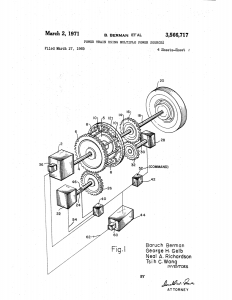Look at The Martian Chronicles. At the height of American optimism, Bradbury wrote a bittersweet novel about the failures of science, technology, and progress. Humanity makes it to Mars, but the triumph is illusory. Mars becomes a landscape of ghost towns. The novel was an extraordinarily fertile moment in American imagination. He suggested the notion of unlimited positive progress was an illusion. His wasn’t the dystopian vision of Orwell or Zamyatin but something gentler and more elegiac. H. G. Wells could write about the end of civilization from a global perspective. Bradbury made the vision personal and lyric.
— Dana Gioia on Ray Bradbury
I’ve read a lot of Bradbury recently, that is to the extent that I can focus long enough to read much of anything. The Illustrated Man was better than the The Illustrated Woman contained in the uniformly depressing Machineries of Joy which I am struggling to finish. There can be no question though that The Martian Chronicles deserves the accolades and adaptations.
I struggle with Bradbury’s categorization as a science fiction writer. Chronicles aside, he is a breed apart from Asimov and Clarke who briskly get down to business peddling a bright future for one and all enabled by the latest in vacuum tubes and servomotors. Bradbury doesn’t fit that mold and through his thick glasses he saw a grimy future broken by the ones who people it. He is lyrical, almost to excess in fact, and it takes a special frame of mind to deal with his unusual rhythms and devices. His observations on technology are profoundly gloomy. Not for him the boundless optimism and things coming out well in the wash. Long before Sputnik, Gagarin, or their American counterparts, he saw that a future world, a spacefaring one, would eventually have to send the worst of the species after the best had paved the way. The Chronicles are full of careerists, louts, and brutes going not to explore but to exploit.
In recognition of the Bradbury centennial, Hawthorne expat and recent state Poet Laureate Dana Gioia speaks to Bradbury’s wide and ongoing cultural impact in dialogue with his biographer. The discussion does locate Bradbury firmly as a Los Angeles writer, a thing that still surprises many as that which does not, can not, or at least ought not to exist in the heart of the entertainment industry. Gioia acknowledges that “major mainstream journals published [Bradbury’s] fiction, and producers adapted his work for movies, radio, and TV.” He leaves out the stage apart from a brief mention in another list and more’s the pity. The lyricism, the elegiac odes to humanity’s perpetual folly is what allowed the Pandemonium Theatre Company to bring so many of those stories to life with humans speaking to humans and not through effects in post-production. Pandemonium was another Bradbury creation nurtured by others until its demise in the early 2000s. The Falcon hosted an uneven Fahrenheit 451 in 2002 with other, more successful productions at Theatre West and the lovely yet now defunct Court Theatre. He often appeared in the audience and, when asked, would say a few words before curtain to an appreciative audience sufficiently steeped in LA etiquette to applaud yet keep a respectful distance.
It is trivial to hang present day realities on deceased authors but there is no doubt that it is the pessimistic futures Bradbury foresaw decades ago that have played out and not those of his compatriots. We don’t have energy too cheap to meter, we aren’t in control of our robots, and ubiquitous telecommunications has served to narrow, divide, and power the slide into darkness. We are the same desperate creatures that came out of the caves only with flashier and deadlier toys.
Here are two sobering stories adapted in 1950 for the Dimension X radio series.
Youtube Channel: Old Time Radio Researchers
